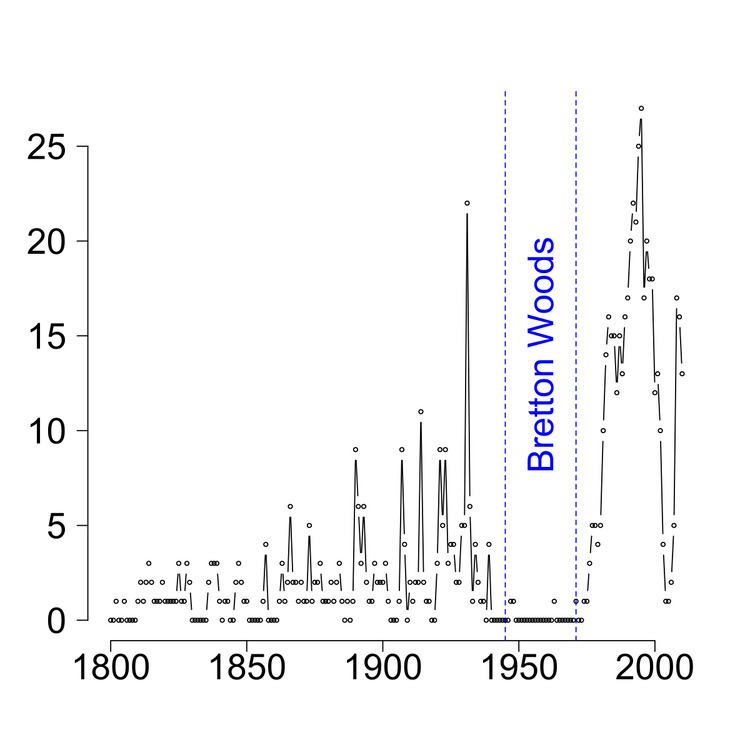 | ||
A global recession is recession that affects many countries around the world—that is, a period of global economic slowdown or declining economic output.
Contents
Definitions
The International Monetary Fund defines a global recession as "a decline in annual per‑capita real World GDP (purchasing power parity weighted), backed up by a decline or worsening for one or more of the seven other global macroeconomic indicators: Industrial production, trade, capital flows, oil consumption, unemployment rate, per‑capita investment, and per‑capita consumption".
According to this definition, since World War II there were only four global recessions (in 1975, 1982, 1991 and 2009), all of them only lasting a year (although the 1991 recession would have lasted until 1993 if the IMF had used normal exchange rate weighted per‑capita real World GDP rather than the purchasing power parity weighted per‑capita real World GDP). The 2009 global recession, also known as the Great Recession, was by far the worst of the four postwar recessions, both in terms of the number of countries affected and the decline in real World GDP per capita.
Before April 2009, the IMF argued that a global annual real GDP growth rate of 3.0 percent or less was "equivalent to a global recession". By this measure, there were six global recessions since 1970: 1974–75, 1980–83, 1990–93, 1998, 2001–02, and 2008–09.
Overview
Informally, a national recession is a period of declining economic output. In a 1974 New York Times article, Julius Shiskin suggested several rules of thumb to identify a recession, which included two successive quarterly declines in gross domestic product (GDP), a measure of the nation's output. This two-quarter metric is now a commonly held definition of a recession. In the United States, the National Bureau of Economic Research (NBER) is regarded as the authority which identifies a recession and which takes into account several measures in addition to GDP growth before making an assessment. In many developed nations (but not the United States), the two-quarter rule is also used for identifying a recession.
Whereas a national recession is identified by two quarters of decline, defining a global recession is more difficult, because a Developing country is expected to have a higher GDP growth than a Developed country. According to the IMF, the real GDP growth of the emerging and developing countries is on an uptrend and that of advanced economies is on a downtrend since late 1980s. The world growth is projected to slow from 5% in 2007 to 3.75% in 2008 and to just over 2% in 2009. Downward revisions in GDP growth vary across regions. Among the most affected are commodity exporters, and countries with acute external financing and liquidity problems. Countries in East Asia (including China) have suffered smaller declines because their financial situations are more robust. They have benefited from falling commodity prices and they have initiated a shift toward macroeconomic policy easing.
The IMF estimates that global recessions occur over a cycle lasting between eight and ten years. During what the IMF terms the past three global recessions of the last three decades, global per capita output growth was zero or negative.
